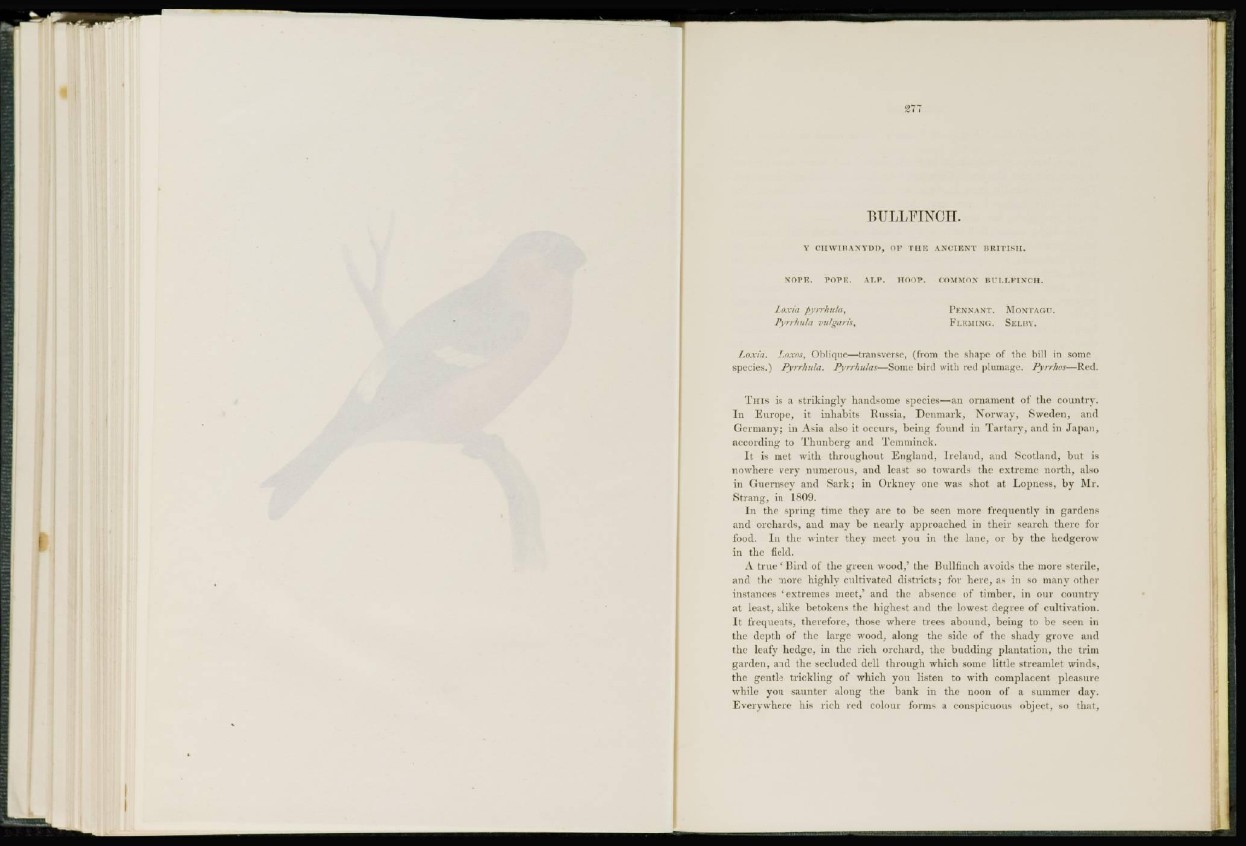
"BULLFINCH.
Y CHWIBANYDD, OF THE ANCIENT BRITISH.
NOPE. POPE. ALP. HOOP. COMMON BULLFINCH.
Loxia pyrrkula,
Pyrrkula vulgaris.
PENNANT. MONTAGU.
FLEMING. SELBY,
Loxia. Loxos, Oblique—transverse, (from the shape of the bill in some
species.) Pyrrkula. Pyrrhulas—Some bird with red plumage. Pyrrhos—Red.
Tins is a strikingly handsome species—an ornament of the country.
In Europe, it inhabits Russia, Denmark, Norway, Sweden, and
Germany; in Asia also it occurs, being found in Tartary, and in Japan,
according to Thunberg and Tcmminck.
It is met with throughout England, Ireland, and Scotland, but is
nowhere very numerous, and least so towards the extreme north, also
in Guernsey and Sark; in Orkney one was shot at Lopness, by Sir.
Strang, in 1809.
In the spring time they are to be seen more frequently in gardens
and orchards, and may be nearly approached in their search there for
food. In the winter they meet you in the lane, or by the hedgerow
in the field.
A true 'Bird of the green wood,' the Bullfinch avoids the more sterile,
and the more highly cultivated districts; for here, as in so many other
instances 'extremes meet,' and the absence of timber, in our country
at least, alike betokens the highest and the lowest degree of cultivation.
It frequents, therefore, those where trees abound, being to be seen in
the depth of the large wood, along the side of the shady grove and
the leafy hedge, in the rich orchard, the budding plantation, the trim
garden, and the secluded dell through which some little streamlet winds,
the gentle trickling of which you listen to with complacent pleasure
while you saunter along the bank in the noon of a summer day.
Everywhere his rich red colour forms a conspicuous object, so that,